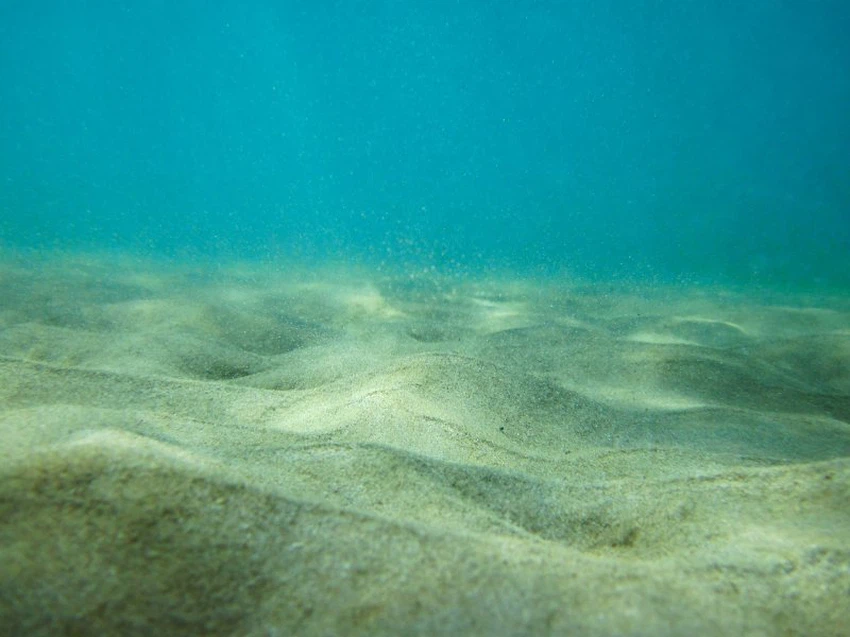Saudi Arabia discovers blue holes, but not in space
Arab Weather - The word holes has always been associated with the term space, and perhaps the word black was associated with it in most scientific articles, and by most physicists, but this time we will talk about blue holes that are considered one of the rare and mysterious phenomena, but they are not in space.
phenomenon of blue holes
It is one of the phenomena recently discovered in the waters of the Red Sea on the Saudi coasts.

What is this phenomenon and what is the secret of its mystery?
Answer: Blue holes are known as vertical caves carved from eroded limestone, and are characterized by being deeper than the ocean. They are considered rare geological phenomena and a unique ecosystem rich in biodiversity. Blue holes are deep compared to the shallow areas around them, and perhaps the secret behind their mystery is how they formed.
How did blue holes form?
Answer: There have been many speculations about the formation of these holes, perhaps the most prominent of which is that they were formed during the last ice age by eroding limestone, or that they were formed from floods. To end these speculations, a number of researchers from Mexico ventured and dived to explore the reality of the formation of these holes. As they dived along one of the blue holes down to the lowest region, which is characterized by its lack of oxygen, to obtain samples of water.
After conducting studies on water samples, they found that it is acidic and completely devoid of oxygen, and perhaps the reason behind its lack of oxygen is the lack of photosynthesis.
As for life there and the lack of oxygen, the depths of blue holes are characterized by the lack of life forms in them, which usually depend on oxygen, but this does not mean that there is no biodiversity in their depths, and perhaps life there is the share of microorganisms that do not depend on oxygen such as microbes Which depends in its metabolism on the sulfate compound, which is toxic to most other forms of life.
Where do blue holes appear?
Answer: The deepest blue holes are found in the South China Sea at a depth of 987 feet, which is called the Yongli hole, while the second deepest hole is in Chetumal Bay in Mexico at a depth of 900 feet, while the Caribbean Sea and its many blue holes contain the third deepest hole. Blue, which extends at a depth of 663 feet.
The appearance of blue holes in the waters of the Red Sea off the Saudi coast
Whereas, no blue holes have been discovered in the Red Sea since 1888
The discovery of blue holes in the waters of the Red Sea on the Saudi coast is one of the unique discoveries of its kind. Carlos Duarte, professor of marine sciences at King Abdullah University of Science and Technology in the Kingdom of Saudi Arabia, said:
"The geology of blue holes in the Red Sea is unique."
Perhaps the story of blue holes and their discovery in the Red Sea began last year when the National Center for Wildlife Development conducted a cruise to discover the Red Sea, which in turn extended to 19 weeks from Saudi Arabia in the south to the Gulf of Aqaba in the north.
Perhaps the most important of these discoveries is the discovery of 20 blue holes on the southern coasts of the Red Sea. Which revealed many discoveries that formed an important part of the biological richness in the Red Sea.
The National Wildlife Center in the Kingdom of Saudi Arabia also considered that the process of searching and discovering blue holes is a major achievement in the discovery of oceans and seas, through a video it issued in August.
Blue holes, Klein said in the Saudi city of Thuwal
"It's very much like a natural laboratory for us to study."
It contains "things that haven't really been seen in over 100 years".

What is distinctive about the blue holes discovered in the Red Sea on the Saudi coast?
The answer: Perhaps what distinguishes these holes, as Muhammad Ali Qurban, CEO of the National Wildlife Center, said last week,
“Blue holes are rich in biodiversity and host new coral reefs. i
"The bottoms of the holes could contain a completely different set of biodiversity," he said.
Perhaps this biological richness and unique geological formation will be a distinguished tourist destination that may provide opportunities for studies and research in the field of marine biodiversity.
The discovery of blue holes has had a significant impact on the various environmental and tourism aspects of the Kingdom of Saudi Arabia.
Perhaps the wonders of blue holes are like a drop that, when it becomes an ocean, sinks into its depths, and is part of a cosmic system that hides many wonders that reflect the extent of creativity in the details of the universe and the depth of its secrets.
Sources:
The discovery of blue holes in the Red Sea, Saudi Arabia.. What is its story?
A New Blue Hole In the Ocean Extends Almost as Far as the Eiffel Tower
Blue holes off Saudi Arabia to top 'every scuba diver's bucket list'
Arabia Weather App
Download the app to receive weather notifications and more..



